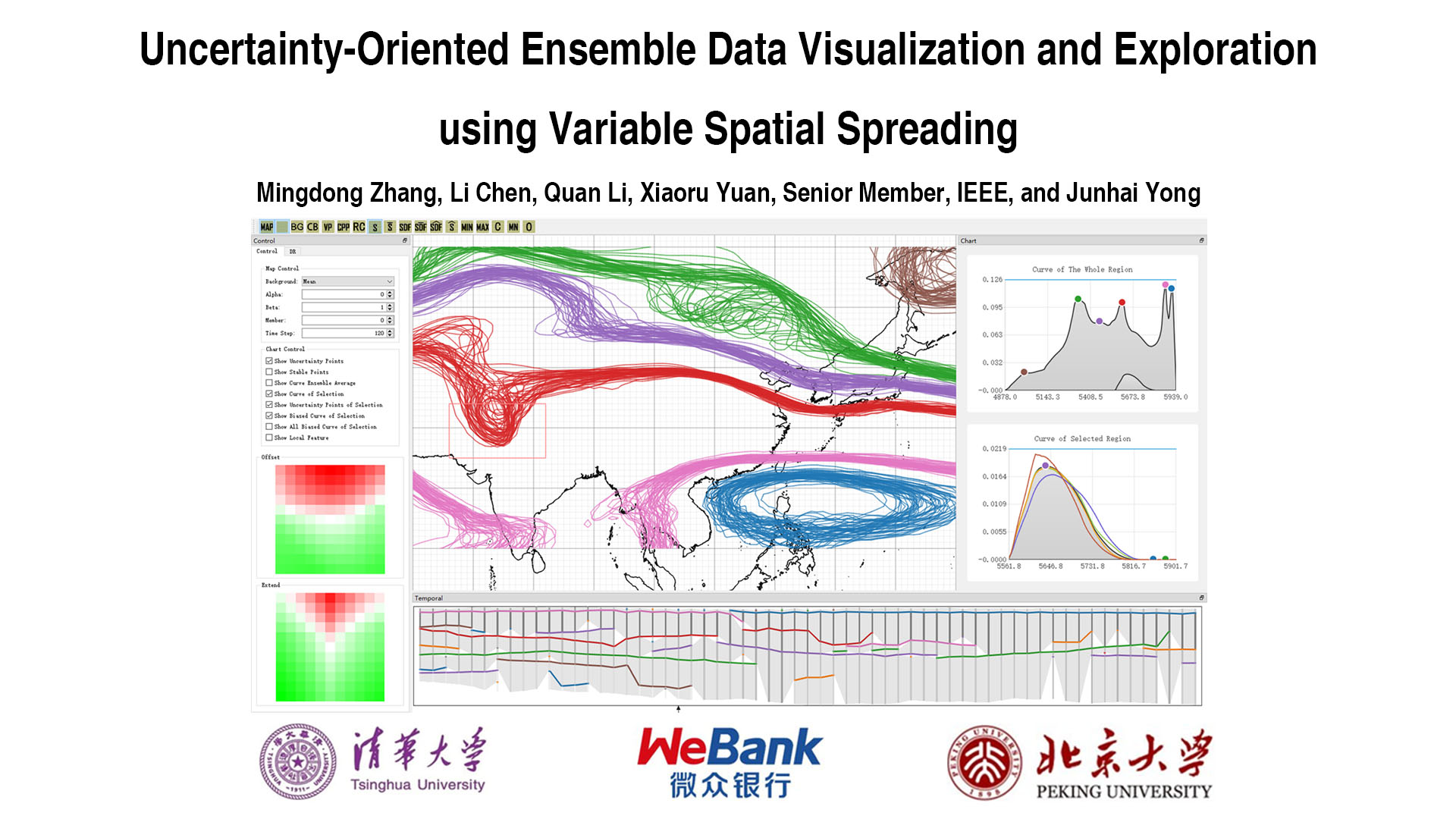Uncertainty-Oriented Ensemble Data Visualization and Exploration using Variable Spatial Spreading
Mingdong Zhang, Li Chen, Quan Li, Xiaoru Yuan, Jun-hai Yong
External link (DOI)
View presentation:2020-10-28T18:30:00ZGMT-0600Change your timezone on the schedule page
2020-10-28T18:30:00Z

Fast forward
Direct link to video on YouTube: https://youtu.be/nP0jC8QnHHY
Keywords
Uncertainty visualization, ensemble visualization, spatial spreading, temporal analysis
Abstract
As an important method of handling potential uncertainties in numerical simulations, ensemble simulation has been widely applied in many disciplines. Visualization is a promising and powerful ensemble simulation analysis method. However, conventional visualization methods mainly aim at data simplification and highlighting of important information on the basis of domain expertise instead of providing a flexible data exploration and intervention mechanism. Trial-and-error procedures have to be repeatedly conducted by such approaches. To resolve this issue, we propose a new perspective of ensemble data analysis using the attribute variable dimension as the primary analysis dimension. Particularly, we propose a variable uncertainty calculation method based on variable spatial spreading. On the basis of this method, we design an interactive ensemble analysis framework that provides flexible interactive exploration of the ensemble data. Particularly, the proposed spreading curve view, the region stability heat map view, and the temporal analysis view, together with the commonly used 2D map view, jointly support uncertainty distribution perception, region selection, and temporal analysis, as well as other analysis requirements. We verify our approach by analyzing a real-world ensemble simulation dataset. Feedback from domain experts demonstrates the efficacy of our framework.